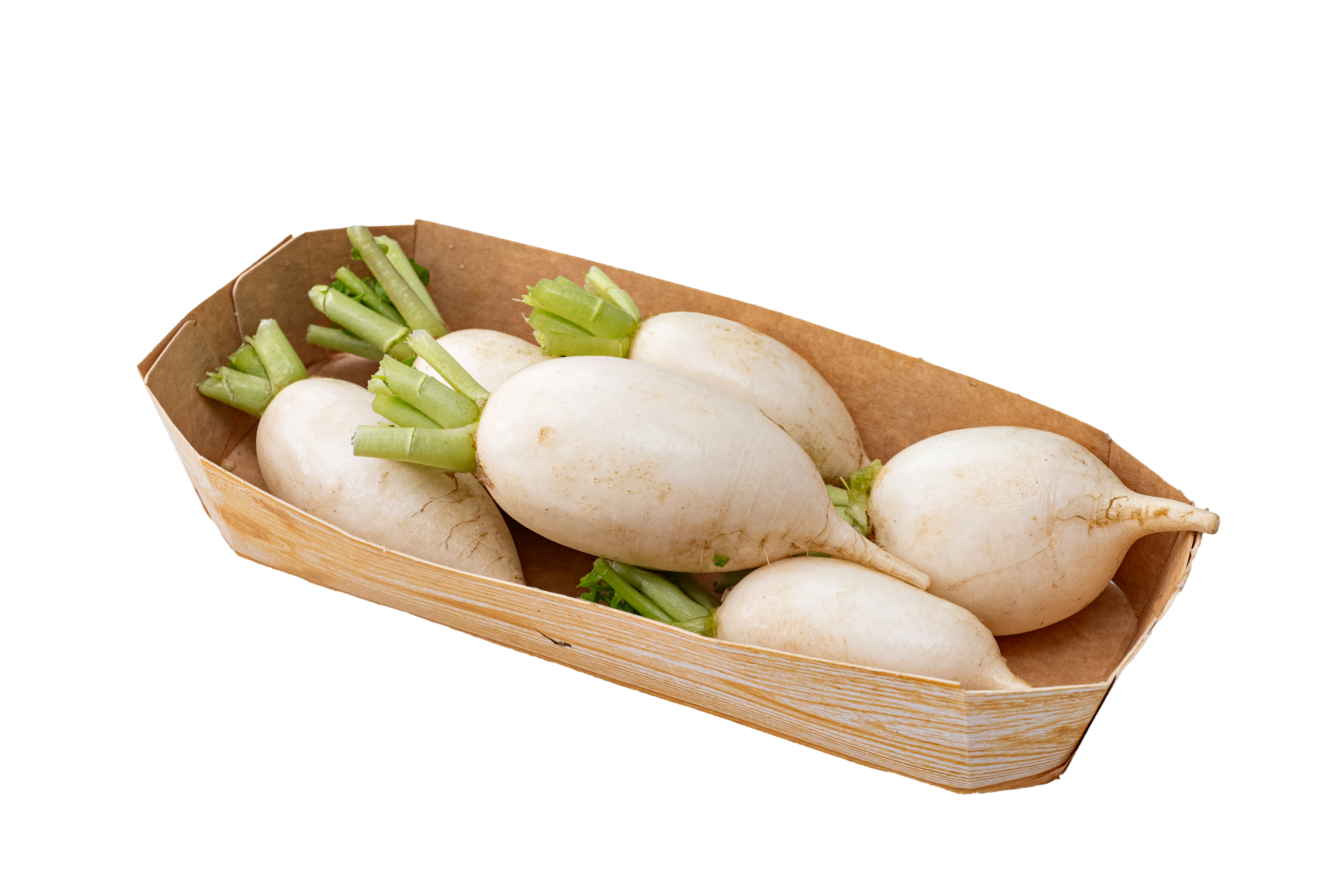Baby Turnips
Baby turnips are small, young versions of the traditional turnip, boasting a sweeter and milder flavor. Their creamy-white skin, sometimes with a hint of purple, encloses a crisp, juicy flesh. These diminutive root vegetables are versatile, suitable for roasting, boiling, or eating raw in salads. Their delicate taste and tender texture make them a delightful addition to both rustic and refined dishes.
Characteristics of Baby Turnips
Baby turnips, also known as “young” or “spring” turnips, are the smaller, younger versions of the regular turnips we often see in stores. Here are some of their characteristics:
- Size: Baby turnips are usually around the size of a large radish or a small golf ball.
- Color: While the most common turnip variety has a bright purple top (where it was exposed to sunlight) and a white bottom, baby turnips are often uniformly pale or light in color, although some might still show a bit of the purple tint.
- Taste and Texture: Baby turnips have a milder, sweeter flavor than their mature counterparts. Their texture is also more tender and less fibrous. They can be eaten raw, unlike larger turnips which are typically better when cooked.
- Greens: Often, baby turnips are sold with their greens still attached. These greens are tender and have a slightly peppery taste, somewhat similar to mustard greens. They can be sautéed, steamed, or eaten raw in salads.
- Nutritional Profile: Like mature turnips, baby turnips are a good source of vitamin C, fiber, and antioxidants. They also contain smaller amounts of other vitamins and minerals like vitamin A, potassium, and calcium.
- Culinary Uses: Because of their tender texture and sweeter taste, baby turnips are versatile in the kitchen. They can be eaten raw in salads, pickled, roasted, sautéed, or even pureed into soups. Their milder flavor makes them a great complement to many dishes.
- Storage: Baby turnips should be stored in the refrigerator. If they come with greens attached, it’s best to separate the greens from the roots to keep both fresh. The greens can be stored in a plastic bag in the crisper drawer, while the turnip bulbs can be stored in a separate bag.
- Growing Season: Baby turnips can be harvested earlier in the growing season than mature turnips. In many climates, there can be both a spring and fall planting/harvesting season for turnips.
- Popularity: In recent years, baby turnips have gained popularity, especially in gourmet cooking and farm-to-table dining due to their delicate flavor and versatile use.

